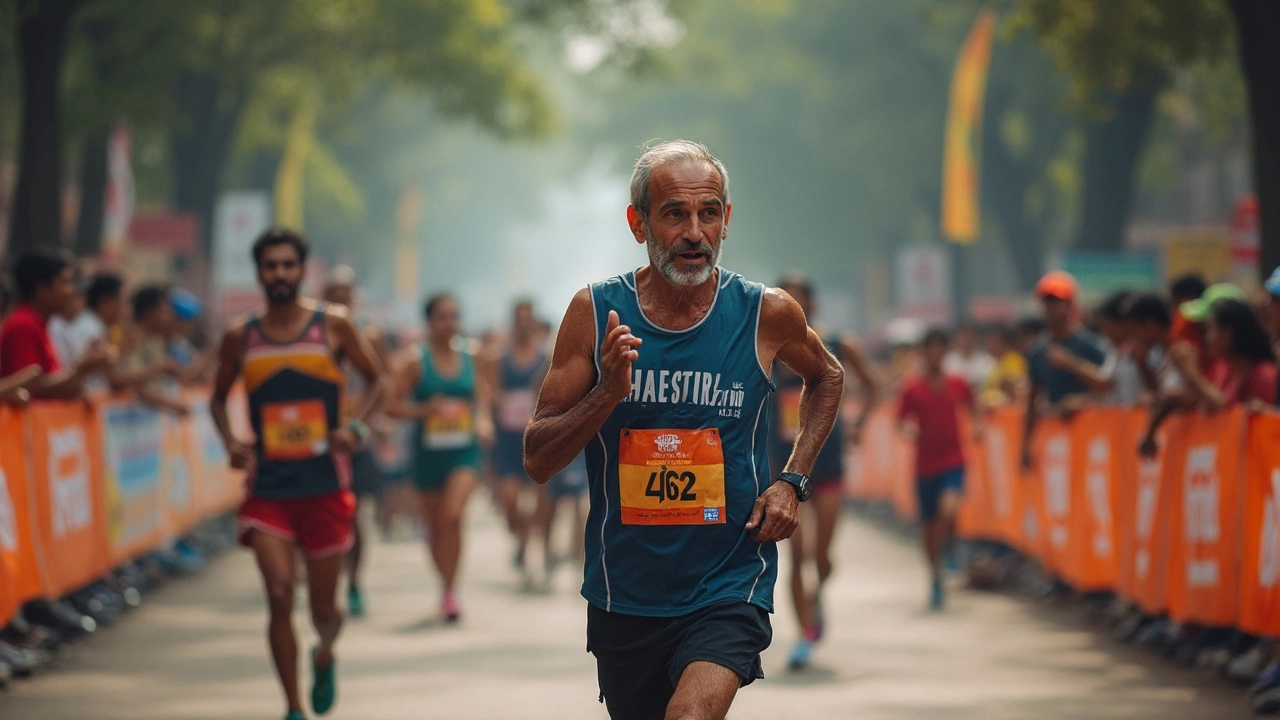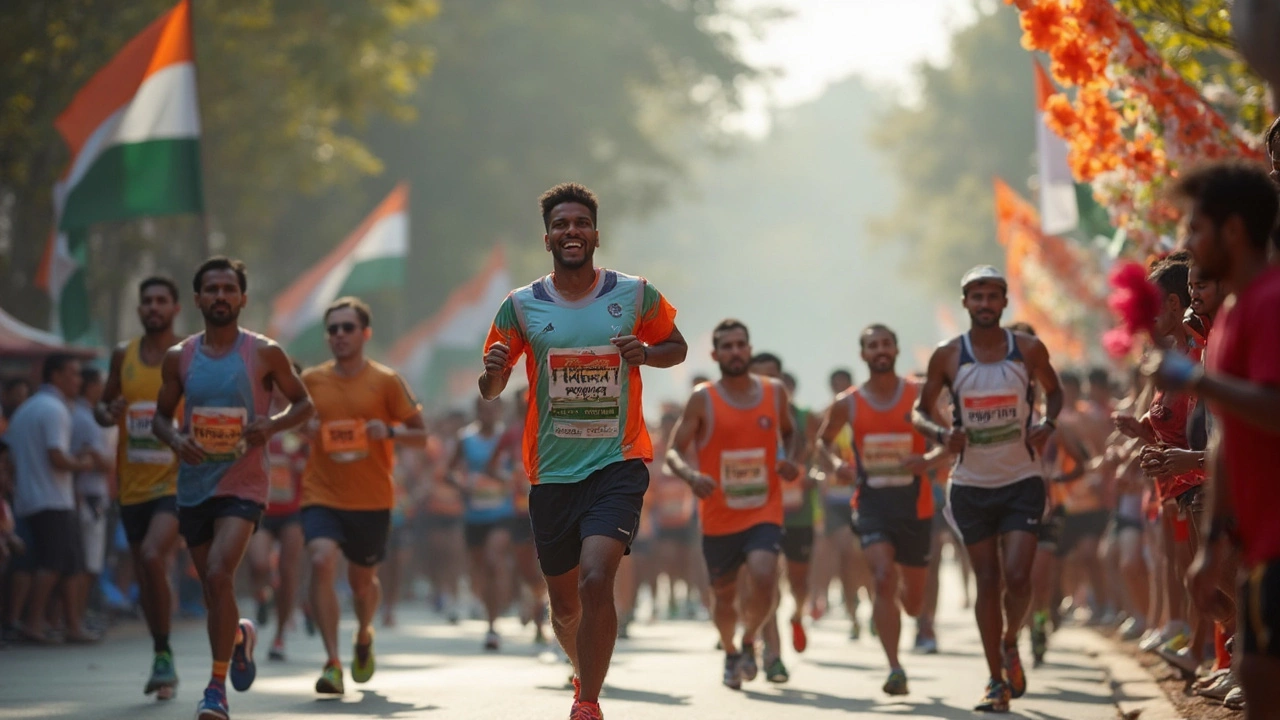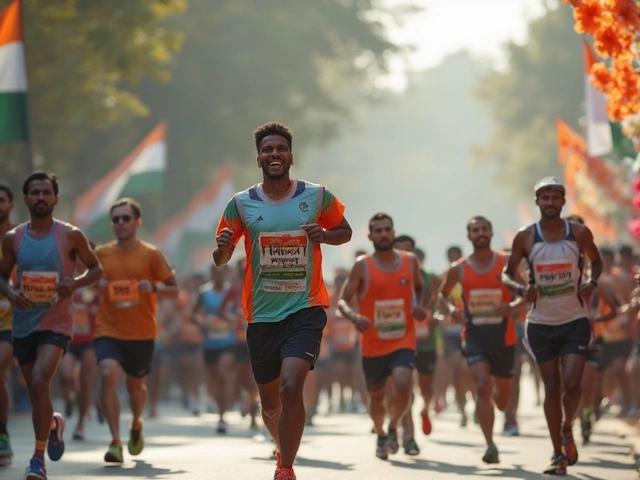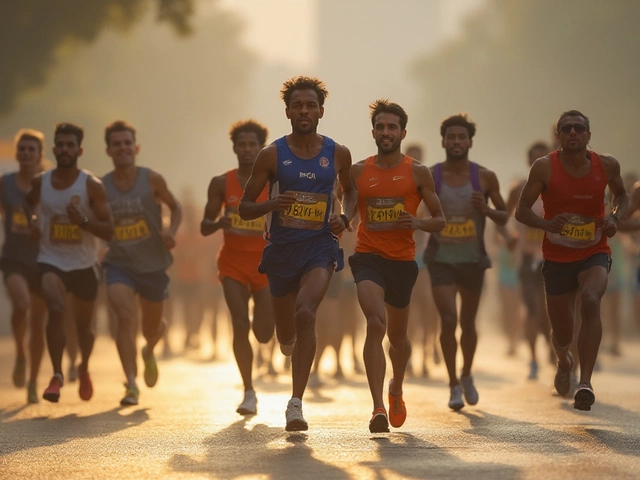The first time you watch a marathon, it’s easy to think everyone just keeps running nonstop for over four hours. Truth is, even people aiming for fast times end up walking at some point. Walking isn’t a sign of weakness. In fact, it’s often part of a racer’s strategy—especially when your energy starts to dip or when those dreaded muscle cramps sneak up mid-race.
For a lot of runners, walking can be the saving move that keeps them from burning out by mile 18. Some even schedule walking breaks from the start, mixing a brisk walk with their running in something called the “run-walk” method. Olympic coach Jeff Galloway swears by it, and tons of first-timers—and even seasoned marathoners—use his tips to finish strong.
Walking a few blocks or even a whole water station is totally normal. It gives your muscles a quick reset and often helps bring your heart rate down. You’ll see folks grabbing a cup at the aid table, slowing to a walk, and getting a boost for their next mile. Even at the world’s biggest races like Boston or Berlin, walking is just part of getting through 26.2 miles in one piece.
- The Walking Question: Myths and Realities
- How the Pros Use Walking
- Why Everyday Runners Plan to Walk
- The Science Behind the Run-Walk Method
- Tips for Using Walking During Your Marathon
- Common Mistakes and Smart Adjustments
The Walking Question: Myths and Realities
Ask anyone who’s never run a marathon, and they’ll probably swear you’re supposed to run every step of the 26.2 miles. That’s just not true. The idea that marathon runners never walk is a myth. In fact, you'll see even seasoned runners mixing in walking during big city races, whether it’s for a quick breather, refueling, or dealing with cramps and blisters.
Think only beginners walk? Wrong again. Some top finishers have used walking breaks and still set personal records. It’s not about giving up; it’s about being smart and listening to your body. In one study done at the New York City Marathon, more than 70% of non-elite runners admitted to walking at some point during the race.
| Group | Percent Who Walked |
|---|---|
| Elite Runners | 10% |
| Amateur Runners | 72% |
| First-time Marathoners | 85% |
There's also a big misconception that walking ruins your finish time. Fact is, lots of runners actually post faster or more consistent times by mixing running and walking. Scheduled walking can help you avoid “hitting the wall,” which is that awful feeling when your legs just stop working around mile 20.
Big races—like London, Chicago, and Berlin—have plenty of water stations, and most runners will walk through at least a few. Walking here isn’t a sign of failure, it’s part of a real, smart game plan that more and more runners are using.
If you’re new to marathon training, don’t get sucked in by the pressure to run every single second. Walking in marathons is normal, and lots of runners use it to save energy and avoid injuries. Sometimes, the best way to move forward really is to slow it down for a bit.
How the Pros Use Walking
It might sound surprising, but even some marathon runners at the elite level mix walking into their strategy—just not in the way you'd expect during a fast race. Most pro runners train to run every step, but things change quick when you look at tough conditions or super-long events like ultramarathons. Plenty of Olympic marathoners use short walking breaks to grab water, fuel up, or shake out a cramp when racing in crazy heat or humidity.
Take the 2019 World Championships in Doha, for example. Temperatures soared above 85°F (about 29°C). The women’s marathon wasn’t about who went the fastest, but who managed their body heat best. Several front-pack runners slowed to a walk through aid stations, making sure they stayed hydrated and cool. In gnarly marathons like Boston (famous for its unpredictable weather), you’ll sometimes see the pros walk a few steps at water stops, especially when the hills start crushing their quads after Heartbreak Hill.
Walking is also huge in pace management. Pro coaches like Greg McMillan recommend walking through every aid station in hot weather, even for top-level marathon runners. That means slowing down to a fast walk for about 10–20 seconds, so you actually swallow your water instead of spilling it all over your face. Those few seconds can help prevent dehydration and gastric issues later on.
If you look at ultramarathoners—those crazy athletes doing double or triple the marathon distance—walking is totally part of the plan. Elite runners like Camille Herron and Zach Bitter talk about walking whole hills or trail segments to save energy for later. They know that the line between running and walking gets blurred when you're on your feet for 5, 6, or even 12 hours. It’s not weakness—it's smart racing.
Here’s a quick look at a few ways pros use walking to their advantage:
- Hydration and fuel: Almost all elite marathoners slow to a walk or jog at aid stations to get fluids and food down without choking or cramping up.
- Heat management: Walking at aid stations is common in hot races to avoid overheating.
- Pacing control: Mixing short walks helps ultramarathoners prevent muscle breakdown and finish strong.
- Injury recovery: Even pros swap to walking when handling cramps or sudden pain, so they can still finish the race.
In the table below, check out how often walking comes into play at different elite level events:
| Event | Walking Occurrence | Purpose |
|---|---|---|
| Olympic Marathon | Rare (only at aid stations) | Drink/eat, manage body temp |
| World Champs Doha 2019 | Common | Hydration, avoid heat stroke |
| Ultramarathon (100km+) | Standard | Energy conservation, manage fatigue |
Long story short: if you see even the top marathon runners slow to a walk, they’re probably using their heads, not giving up. Turns out, sometimes walking is the best way to run smart.
Why Everyday Runners Plan to Walk
Most people running a marathon aren’t trying to win. They’re aiming to finish, maybe set a personal best, or just enjoy the atmosphere. Here’s the thing—walking during a marathon is actually smart, especially for marathon runners who aren’t racing for a podium spot. Plenty of folks even plan it right into their race from the start.
Walk breaks help keep your legs fresh when fatigue sets in, especially after the halfway point. You’ve probably seen the numbers: almost 70% of non-elite runners mix walking into their race. Some choose to walk every mile at the water stations, while others follow strict intervals, like running for five minutes and walking for one. The goal? Stay injury-free and finish without that classic marathon shuffle.
Walking isn’t just a fallback. It can mean the difference between getting to the finish and hitting the dreaded wall. When you mix running and walking, you give your muscles a short break, get your breathing under control, and prevent your pace from crashing late in the race. That’s why methods like Jeff Galloway’s Run-Walk-Run are still popular, especially with first-timers and those over 40 who want to avoid injuries.
- Walking in marathons reduces injury risk compared to non-stop running.
- Planning walk breaks lets you pace yourself and tackle the tough last miles.
- It helps beginners overcome the mental hurdle of 26.2 miles, making the distance more manageable.
Check out this quick breakdown showing how many everyday runners actually plan to walk during their race:
| Runner Type | % Who Walk (at least 1 mile) |
|---|---|
| First-timers | 82% |
| Recreational/Club Runners | 68% |
| Experienced/Competitive | 34% |
If you’re a regular runner training for your first or fifth marathon, planning walk breaks isn’t just okay—it’s a proven move to help cross the finish line, avoid pain, and maybe even enjoy the experience a bit more.

The Science Behind the Run-Walk Method
Turns out the run-walk method isn’t just a hack for beginners—there’s real science behind why it works, and some elite marathon runners swear by it for staying strong late in a race. The idea is simple: by mixing running with short walking breaks, you use slightly different muscles, lower your heart rate, and keep your energy levels from crashing. That means your pace drops less dramatically in the final miles.
Jeff Galloway, a former Olympic runner and popular coach, has tested this approach for decades. Here’s what he says about it:
“By giving your legs a scheduled break with regular walk intervals, you conserve energy and reduce flooding of the muscles with fatigue.”
There’s actually a study published in the Journal of Science and Medicine in Sport that tracked two groups: one ran straight through, and the other used the run-walk method. The run-walkers didn’t finish much slower, but they reported less pain and better recovery after the race. Another paper found that alternating walking with running can save 20-40% of muscle glycogen (that’s your main energy tank).
Here’s what happens in your body when you slot in some walking breaks:
- Reduces fatigue: Walking uses less energy than running, so you give your system a quick break.
- Manages muscle soreness: Changing your movement lets overworked muscles recover for a bit.
- Cuts down overheating: Brief walks cool you down, which is huge when the sun’s beating down or it’s humid.
- Boosts mental grit: It’s easier to focus when you break a huge task (like a marathon!) into bite-sized chunks.
Here’s a quick table showing average finish times for marathoners who use non-stop running versus those who mix in strategic walking:
| Strategy | Average Finish Time (hours:minutes) | Reported Muscle Soreness |
|---|---|---|
| Non-stop Running | 4:15 | High |
| Run-Walk (e.g., 5min run/1min walk) | 4:25 | Moderate |
So you lose a tiny bit of time, but you cross the line feeling way better, with less risk of blowing up completely in the final miles. That’s why so many marathon runners—from first-timers to old pros—use this approach to crush 26.2 without wrecking their bodies.
Tips for Using Walking During Your Marathon
Thinking of working walking breaks into your next marathon? Smart move. Some of the best finishers out there don’t try to run the whole way through. Here’s how you can use walking to save energy and boost your chances of crossing the finish line strong—without feeling like you’ve let yourself down.
- Practice Your Walk Pace: If you only walk when you’re wiped out, your body gets confused. Add short walk intervals into your long training runs. A good rule: walk for one minute, run for five. This teaches your legs how to switch gears quickly.
- Plan Your Breaks: Don’t wait until you’re tired and desperate. Set exact points for breaks ahead of time, like every aid station or at every 5K. This keeps you ahead of the fatigue and makes walking feel like part of your strategy.
- Walk With Purpose: Keep your arms moving and stay upright. A slow, lazy stroll just eats time. Aim for a brisk pace—something faster than your normal walk, but not stressful. Olympic coach Jeff Galloway always says, "When you walk, walk like you mean it."
- Refuel and Rehydrate: Use walking breaks to take in water or snacks without choking or spilling. Walking lets your stomach handle food better, which is a big win when you hit those later miles.
- Protect Your Muscles: If you start to feel cramping or strain, a 60-second walk can help muscles reset. Don’t see it as quitting—see it as a tune-up that keeps you running later.
According to Runner’s World, 45% of runners at big city marathons take at least one walking break, and Galloway’s group reports average marathon finishing times improve by about 13 minutes when runners use a run-walk approach.
| Walking Interval | Avg. Finish Time Improvement |
|---|---|
| Run 5 min, Walk 1 min | +13 minutes faster |
| Run 10 min, Walk 1 min | +7 minutes faster |
"Almost everyone can finish a marathon by using strategic walk breaks—even people who never believed they could go the distance." – Jeff Galloway, author and Olympic coach
Bottom line: use walking to your advantage. Make it part of your training and race plan, and you’ll have a much better shot at feeling strong both during and after your next marathon.
Common Mistakes and Smart Adjustments
A lot of first-timers end up making simple mistakes when figuring out how to use walking breaks in a marathon. Even seasoned marathon runners sometimes get this part wrong, thinking there’s shame in walking. Let’s talk about what trips people up—and some real fixes you can use.
- Waiting Until You Hit the Wall: One of the biggest mistakes is waiting for your legs to turn to jelly before you walk. If you only walk after you’re tired, recovery takes longer and it’s way harder to restart. Scheduled walk breaks—like every mile or two or at each water station—work better.
- Walking Too Long: Some people end up enjoying that walk a little too much and slow all the way down. Science and coaches usually recommend short, disciplined breaks (30–60 seconds), not full-blown strolls. Lingering too long means you might cool off or tighten up.
- Not Practicing the Run-Walk Routine: Another common issue is saving walking for race day but never trying it out during training. This backfires since your body isn't used to the change, and it can mess up your pace or rhythm.
- Poor Timing with Fueling: Grabbing gels or drinks at random times while you’re pushing through might throw you off. It’s smarter to align walk breaks with fuel/water stations, so you slow down, fuel up, and avoid choking or stomach cramps.
- Sneaky Pacing Problems: Some runners walk only because they dashed off too fast at the beginning. Blasting through the first 10K often forces walk breaks later. Smart pacing from the start means you control the need to walk.
Want some quick fixes? Here’s what top marathon runners recommend:
- Test your walk/run intervals in training so your body (and mind) gets used to it.
- Set a timer on your watch to remind you when to walk—no guesswork, just routine.
- Use walking breaks to stay on top of hydration and fueling; your stomach will thank you.
- Keep your walk brisk—think fast power walk, not a lazy amble.
- Don’t let ego trip you up. Even runners finishing in under 4 hours have walking built into their plan.
Just to put things in perspective, a 2023 race report from the Chicago Marathon showed that over 55% of non-elite finishers walked at least a portion of the course. That’s not a fluke—it’s just runners being smart and using every tool to finish the distance well.



